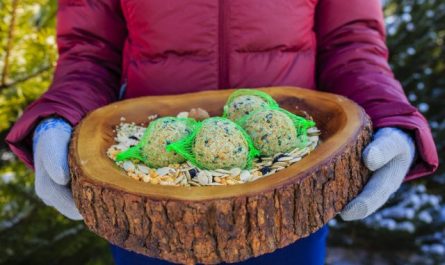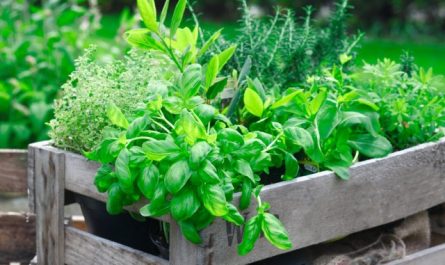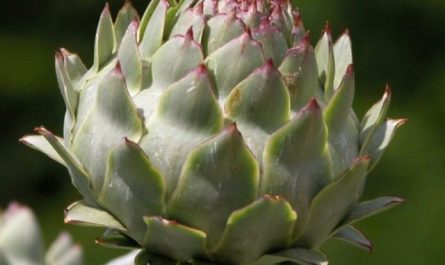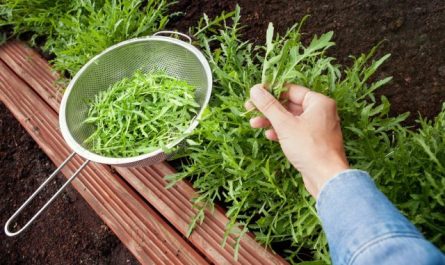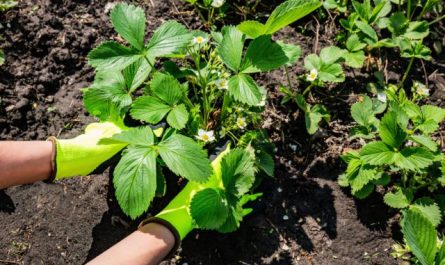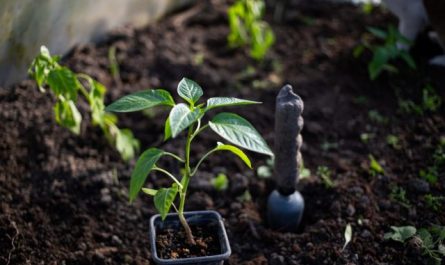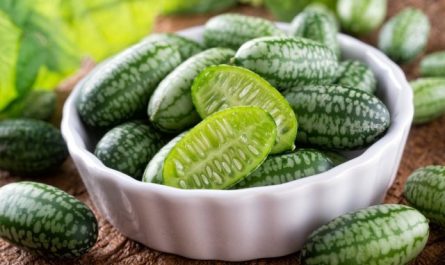Sooner or later, but each of us who touched the earth, starts growing garden strawberries on our plot. And the more we deal with this crop, the more questions we have. And this is good curiosity! After all, many features of this berry cause not only surprise, but sometimes baffle. Why is there light foliage on one bed, and dark on another? Why is the harvest small? Why do berries of different sizes and shapes grow on one bush? Why do some bushes form many whiskers, while others have few? I will try to tell you about all this and much more in this article.

1. How many varieties and types of strawberries are there?
Despite the fact that scientists have been studying strawberries for many decades, there are still many unstudied species in nature, most of which grow in America and Eurasia. In general, there are about 30 species of strawberries in the world, collected in the genus Fragaria.
The most famous of them:
- wild strawberry,
- green strawberry, or half-strawberry,
- Virginia strawberry,
- nutmeg strawberry, or strawberry,
- and finally, garden strawberries, or pineapple strawberries – this is what we grow in the vast majority of cases on our plots.
But how many varieties there are on the planet today is even harder to answer – over 20 thousand! But this is good, because breeders strive to get the best, and they really succeed. If in the 60s a berry weighing about 6-7 g was considered large, today it is already over 15 g. But there are also a number of varieties, … whose berries reach a weight of more than 100 g!
2. How many years can a garden strawberry bush grow and bear fruit?
Many of us know that garden strawberries need to be replanted every two to three years to a new location, renewing the plantings with young plants. However, the question often arises: is this really so?
In general, a strawberry bush has a lifespan of about 15 years, but more often – 8-10. The productive period of the plant is limited to only 2-4 years. Why? Every year the number of horns in the bush increases, and with it the number of flower buds increases, but the root system ages and cannot provide the bush with the necessary nutrition to form a large harvest. Therefore, the older the bush, the more the quality and quantity of its berries decreases.
At the same time, both the lifespan of the plant and its reproductive period depend on external conditions – the more they correspond to the needs of the crop, the longer it lives and bears fruit longer. However, only the first few years are the most productive.

3. Why does garden strawberry not produce a good harvest?
In the first year after planting, garden strawberries have weak flowering – and this is normal for young plants. But in the second year, it also happens that there are few flowers on the berry. The reason may lie in the characteristics of the variety (there are varieties with low, medium, and high yields), as well as in violations of care.
In young strawberry bushes, one peduncle bears 5-7 flowers. Starting from the age of two, 15-30 flowers. The roots of strawberries tend to grow in waves, taking a break to fill the berries in the cold winter period, and periodically renew themselves. Formed in late summer and autumn, they live for about nine months, ensuring the work of the above-ground part of the bush and the laying of flower buds. Formed in the spring, they are responsible for the filling of the berries.
For this reason, if strawberries lack moisture after harvest, the growth of its root system does not resume, the plant does not receive sufficient nutrition, and therefore does not have the strength to lay a large number of flower buds for the next year’s harvest. Therefore, after harvesting, strawberries must not only continue to be watered, but also fed.
Not only the root system, but also the leaf apparatus is responsible for the formation of the strawberry harvest. The leaves formed in the spring ensure the development of berries. The leaves formed in the summer are the process of laying flower buds.
Another reason may be hidden in the absence of lightSome varieties tolerate a little shade well, but most, not receiving enough sun (planted in the shade of trees or near a fence), develop flower buds less intensively than under optimal conditions.
What else influences? Freezing. Often after winter damage by low temperatures, strawberry flowers bloom, but because the pistils were damaged (still in the embryonic state), the berry does not set. A flower damaged by spring return frosts also does not develop into a berry.
Affects the amount of berries and nutritional deviations. Most often, a small harvest is formed with an excess of nitrogen or a deficiency of boron. A large number of flower buds and severe disease damage (the bushes become weak) do not allow plants to form. And infestation with pests, for example, nematodes. And, of course, violations of planting rules. If the root collar is deepened or, conversely, is above the soil level, the plant is oppressed, the berry becomes smaller.

4. Why do strawberries bloom, but not all flowers produce berries?
There are varieties in which the harvest is formed only from the flowers of the first and second, less often the third order, while the upper flowers dry up. This happens because the upper flowers of these varieties are physiologically male – not capable of pollination, and therefore, of forming a berry. Another reason is the lack of light. With weak illumination, the number of sterile flowers increases.
5. Why are there many runners on one strawberry bed and few on another?
The ability to form tendrils is a varietal characteristic. Some varieties form many tendrils, while others form few. Also, depending on the variety, the length of the internodes on the tendrils varies. But in some day-neutral varieties, a reproductive organ, a peduncle, forms instead of a tendril. As a result, flowering is almost continuous.
In most cases, the length of the strawberry bush whip is about 1 m or even more, which must be taken into account when laying the mother plant. In laboratory conditions, over 200 new rosettes can be obtained from one mother plant. But in practice, the closer the rosette to the mother plant, the better it is developed, the stronger its root system, the higher its productive potential. Therefore, rosettes of the 1st, 2nd and 3rd order are mainly taken for seedlings.
In some cases, abundant formation of runners can be determined by external conditions – if the strawberry grows in a lack of light. With severe damage from diseases and pests, weakened plants produce fewer runners.

6. Why do berries of different sizes and shapes form on one bush?
Garden strawberries have many berry shapes, but there are 10 main ones. The typical shape is determined by the majority of the harvest. The first-order berries are slightly different from the main shape. But in addition, they are always larger than the others, sometimes even three or four times.
The most bizarre form of garden strawberry is comb-shaped. Such berries are formed from a fasciated (fused from two or three) flower. Fasciation is a varietal characteristic.
In general, the size of strawberries depends not only on the variety and the order of their arrangement on the peduncle, but also on the ripening period and the condition of the plant – age, foliage, degree of damage by diseases and pests, soil composition, and planting illumination.
7. Are strawberries so sensitive to root damage?
On a young rosette, the first to form roots will grow, from which the largest roots will grow over time, determining not only the strength of the bush, but also the potential for its yield. Therefore, it is necessary to choose well-developed seedlings with a powerful root system and try not to damage it when planting. When selecting seedlings from the mother bush, do not pull the rosettes out of the ground, but carefully dig them out or immediately root them in cups with subsequent transplantation.
8. Does strawberry have a dormant period?
Scientists do not have a clear answer to this question. Due to growing conditions, including low winter temperatures, strawberries fall into a deep dormancy, from which it is impossible to bring them out (as expected) within a month. However, being an evergreen plant, strawberries do not particularly need it.
It has been proven experimentally that under certain conditions, a strawberry plant is capable of producing a second harvest regardless of whether it had a forced dormancy phase or not, the main thing is that there are conditions for the formation of flower buds – for some varieties, a short day (up to 12 hours), for others – a long one.

9. How early do strawberries wake up in spring?
The growth of the root system of garden strawberries begins as soon as the temperature of the root-inhabited soil layer warms up to +2…+3 °C, which is approximately 7-10 days before the start of leaf growth. The growth of the above-ground part is activated in most climatic zones at a temperature of +5…+8 °C, in the south at +2…+5 °C. In autumn, root growth stops as soon as the soil temperature drops to +7…+8 °C. And at +3 °C it stops completely.
Sap flow in garden strawberries begins much earlier than the growth of the above-ground part becomes active.
10. How can you tell if a strawberry bush has been damaged by low temperatures?
First, the in appearance. Healthy plants have green leaves. Damaged plants have a large number of brown leaves (but the horns of such bushes may remain alive). In completely dead plants, the bush “sits down” during a thaw, and even the remaining green leaves “lie down”, later the whole plant dries up.
Second, the by root color. A healthy root system has a yellow or light brown tint. Such a bush holds well in the ground. In case of death, the plants are easily pulled out of the soil, their root system is dark.
Third, by the condition of the horns. In healthy bushes, the horns are white or light green in cross-section. In damaged bushes, depending on the degree of damage, they are yellow, brown, or brown. Yellow and light brown are minor damage (not considered dangerous). Brown are severe damage, indicating tissue death.
И by the condition of the flower. If its center has turned black, the pistils have died, and such a flower will not form a berry. If the pistils are partially damaged, the flower will produce a deformed fruit.
11. Why do some bushes have light foliage, others dark?
The size of the bush, its shape, the degree of foliage, the color of the flower petals, the length of the peduncle, the shape, color, taste and size of the berries, the shape and color of the leaf – all these are varietal characteristics of plants. But not always. Sometimes these characteristics change depending on the growing conditions that have a significant impact on strawberries – soil composition, planting site, agricultural practices, age of the bushes. However, it has been noted – the more leaves a plant has, the higher its yield. Therefore, it is necessary to ensure that the strawberry grows a full-fledged leaf apparatus.
Varieties also differ in the number of leaf blades in the leaf. Some have 3, while others have some leaves with 4 blades, and sometimes even 5. The shape of the leaf blades also varies. They can be obovate, rhombic, oval, round, etc. Often the middle leaf blade can have some transitional shape. Varieties also differ in the edge of the leaf – the shape and arrangement of the teeth. In addition, the blades can be either almost flat, or curved with the edges up or down, or complexly curved.
If we talk about color, there are also variations in shades (green), and different intensities of shine on the upper side, and even differences in the saturation of the color of old (darker) and new leaves.
There is also a difference in the intensity of leaf pubescence. The thicker it is, the more drought-resistant the variety. And in the color of the leaf petioles – in varieties with bright and dark red berries they are pink-red.
But in berries, in addition to shape, color, pulp coloring, taste and consistency, the degree of immersion of drupes in the pulp also differs. And the deeper they are immersed in it, the less transportable the berry is (such varieties should be consumed immediately after picking). The more superficial, the better the shelf life (suitable for the market and for freezing).

12. Why are the berries tasteless?
The reasons for the unsweet berries may be the varietal feature – the variety is storable, tolerates transportation well, so it is grown for the market. But often the sweetness is affected by an imbalance in nutrition (excess nitrogen, lack of potassium or boron), a violation of the irrigation regime (excess or lack of moisture) and lack of light.
13. Why do some strawberry bushes bloom again?
Day-neutral strawberry varieties have repeated flowering. They usually bear fruit until the frosts. But it happens that even on single-season varieties, individual bushes bloom again in the summer. This is how semi-remontant varieties behave.
If conditions are favorable, individual plants of semi-remontant varieties (Talisman, Cardinal, Zenga-Zengana, Redgontlit, etc.) bloom in August and produce a second harvest. This most often happens in years with a cold spring.

